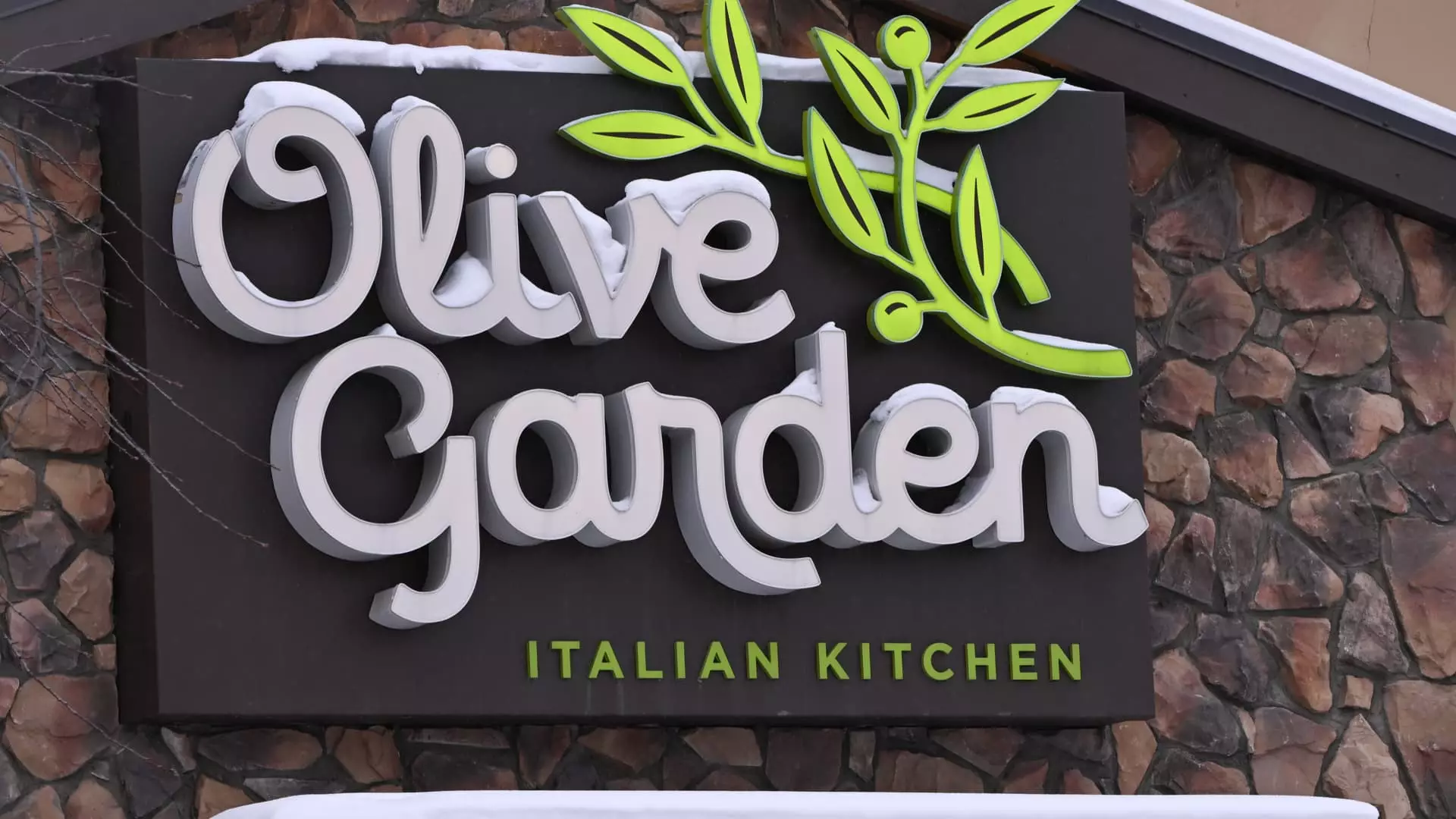Darden Restaurants recently delivered disappointing financial results that surpassed the disillusionment felt by many investors and analysts. For a company traditionally lauded for its reliable brands like Olive Garden and LongHorn Steakhouse, the underwhelming sales figures have raised alarm bells. The earnings per share surpassed expectations slightly at $2.80, but this is hardly the robust performance stakeholders were hoping for, particularly in a marketplace where consumer spending on dining should ideally reflect a post-pandemic recovery.
The company’s reported revenue of $3.16 billion fell short of analysts’ forecasts by $50 million, suggesting that not only has Darden failed to capture anticipated consumer enthusiasm, but it may also be facing a potential decline in brand loyalty among its core customer base. Net income saw a marginal increase from a year prior, yet the headlines are focusing on expectations missed rather than year-over-year gains; this paints an unsettling picture that speaks to a larger malaise within the company.
Underwhelming Brands and Sales Growth
Darden’s crown jewels, Olive Garden and LongHorn, recorded tepid same-store sales growth of just 0.6% and 2.6%, respectively, both of which significantly lagged expert projections. Olive Garden’s performance was especially troubling, missing expected growth by 0.9%, while LongHorn’s disappointing figures underscored a trend of stagnation. Restaurant chains are expected to adapt quickly to changing consumer preferences, but it appears Darden is struggling to catch up with the dynamics of the market.
The lackluster performance of their fine-dining segment, witnessing declines of 0.8%, further amplifies these concerns. When a flagship entity fails to capitalize on opportunities for growth, stakeholders must ask whether the leadership is out-of-touch with evolving culinary tastes or if the economic environment is dampening dining out altogether.
The Allure of Acquisitions Dimming
The recent acquisition of Chuy’s is touted as a potential silver lining, yet it appears to be a double-edged sword. While the addition of Chuy’s restaurants contributed to overall revenue, it also comes loaded with the pressure to deliver results in a market that is bearing down on pricing and consumer sentiment. The anticipated inclusion of Chuy’s in same-store sales metrics is still a far-off consideration, rendering the healthy revenue figures somewhat hollow for the time being.
Darden’s forecast for adjusted earnings from continuing operations has been narrowed, revealing a cautious stance from management amid these headwinds. This pivot in outlook indicates a recognition of the ongoing challenges as its flagship brands falter. Stakeholders are left pondering whether leadership is investing enough in innovation to reignite consumer interest or simply relying on financial adjustments to mask deeper issues.
In light of these performance metrics, it’s clear that Darden Restaurants is at a crossroads. If they do not act swiftly to recalibrate their strategies, focusing on innovation and responsiveness to consumer trends, they could find themselves languishing in a restaurant landscape that demands agility, creativity, and the courage to embrace change. Without this, their once-stellar reputation may become a fading memory overshadowed by missed opportunities and diminishing returns.


Leave a Reply